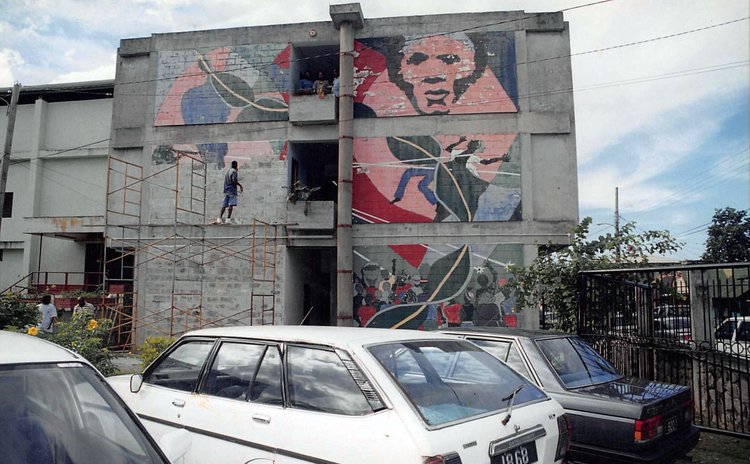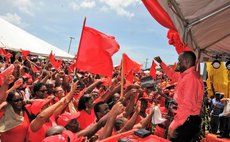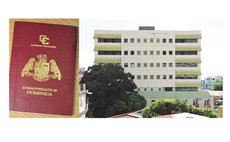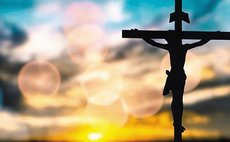May 29, 1979: Will history repeat itself?

"It rained later that day; a steady persistent downpour that washed the blood-stained streets and dispersed the crowds which had gathered on the streets earlier before."
That's a grim description of the events of 29 May 1979 by Dr. Irving W. Andre, the author of "The Rise and Fall of Patrick Roland John" published three years ago, in 2019.
Dr. Andre and other historians have clearly documented this unfortunate episode in the history of Dominica and have clearly implied that as George Santayana famously stated: "Those who do not remember the past are condemned to repeat it."
Undoubtedly, the events that occurred on 29 May 1979, 43 years ago, were unique in the history of Dominican politics.
In our view, the circumstances, the slow build-up followed by the spectacular climax- the riots, the major players, and all the other unsavory ingredients that created a perfect storm that blew Dominica away more than four decades ago, are difficult to forget.
But this history is likely to repeat itself if we succeed in our ongoing and foolish attempts at forgetting it.
We say that although we believe that there will never be another Dame Eugenia Charles waiting eagerly in the slips to take the catch off Patrick John's bat from the bowling of Charles Savarin; there will never be another Louis "Zabocca" Benoit to lead the Waterfront and Allied Workers Union (WAWU) and other trade unions to blockade the island's ports so tightly and for so long; there will never be another Charles Angelo Savarin to persuade and maintain civil servants on a 47-day strike and to demand more than 100 percent increase in salaries and wages; there will never be another Patrick Roland John who will be so blinded by power that he could not recognise the forces aligned against his government, and could not withdraw from the error of his policies and programmes; there will not be a defence force that would so heartlessly shoot protestors with live bullets; and most significantly, there will never be another period when the majority of civil society, the intellectuals and religious denominations come together to solve a perceived problem.
That period of the Seventies, of heightened political consciousness, some say "enlightenment", cannot be duplicated although there are similarities in many of the social, economic, and political conditions then and now.
Oppressive economic and social conditions
For example, in the four-part series, published in The SUN in 2016 entitled "The Road to May 29, the late Dr. William "Para" Riviere argued that the incidents that led to the riots of 29 May 1979 were substantially rooted in the economic circumstances of the island just prior to independence.
Dr. Riviere adds that other factors contributed to the violent uprising of 29 May 1979. These included widespread discontent; repressive laws that attacked freedom of the press and a proposed amendment to the Industrial Relations Act; a uniquely unified trade union movement under the leadership of Charles Angelo Savarin of the Dominica Civil Service Association and joint decisive action by the private sector, civil society, churches, and farmers.
During that period the price of bananas which accounted for 75% of the island's export revenues fell from nine cents to five cents per pound; the prices for bay oil had also crashed in 1974.
Dr. Riviere and others argue that the island's precarious economic system was further worsened by the paucity of aid from traditional donor countries. The problems of unemployment, declining consumer purchasing power, and the lack of new capital formation combined to create an extremely bleak economic future.
Since John's government was strapped for cash it turned to apartheid South Africa, the establishment of a pseudo-free port zone in Portsmouth conceived by Texas businessman Don Pierson, and undertook other questionable capital ventures. Ralph Gonzales, the St. Vincent prime minister aptly described the riots in Dominica as "material contradictions of capitalist underdevelopment followed by dictatorial tendencies within a democratic cloak."
As the population endured that dreadful economy, the Government further risked confrontation with the militant trade unions by enacting the Industrial Relations (Amendment) Act and the Prohibited and Unlawful Societies and Association Act (The Dread Act).
Dr. Honychurch describes the events of 29 May 1979
In "The Dominica Story: A History of the Island", Dr. Lennox Honychurch advanced the view that the Dominica Civil Service Association and other opposition forces in Dominica angered by the Government's legislative agenda forced a confrontation with the John administration.
In a vivid description of the events on May 29, 1979, Dr. Honychurch wrote that after two weeks of intense campaigning by opposition forces, including the Dominica Freedom Party, some 10,000 demonstrators appeared around the House of Assembly at Government Headquarters on the morning of 29 May.
The peaceful demonstration began with police wandering through the crowd. Opposition members were cheered as they entered while members of the government were jeered and jostled. The Defence Force arrived; they fired tear gas; people scattered. In anger protesters hiding in the back alleys, their faces covered with a damp cloth threw stones at the army and the Government Headquarters, the cement and glass building towering above the surrounding slums.
The defense forces opened fire. One youth, Phillip Timothy, was shot dead. Ten others were injured, four critically.
These events and others that followed led to a "palace coup" or what is now popularly called a "constitutional coul woche brigade; it ended the reign of Patrick John on 21 June 1979. Then Hurricane David a few months later completed the collapse of the economy of Dominica.
Now let's fast forward to today. Charles Angelo Savarin is the President of Dominica; Maria, on 18 September 2017 completely destroyed the infrastructure and economy of the island; COVID 19 has taken a severe toll on the social and economic fabric of the island and a large number of supporters of the Dominica Freedom Party are currently propping up a Dominica Labour Party administration.
And there is that phenomenon that existed in 1979 and that we are witnessing today described by critics of the current administration as a high level of "dictatorship within a democratic cloak".
History may not repeat itself but elements of the conditions that led to the riots of 29 May 1979 do exist in May 2022.
And if we do forget our history, especially the stubbornness and corruption of our political leaders and the blindness and apathy of political party followers, are we condemning ourselves to repeat 29 May 1979?




